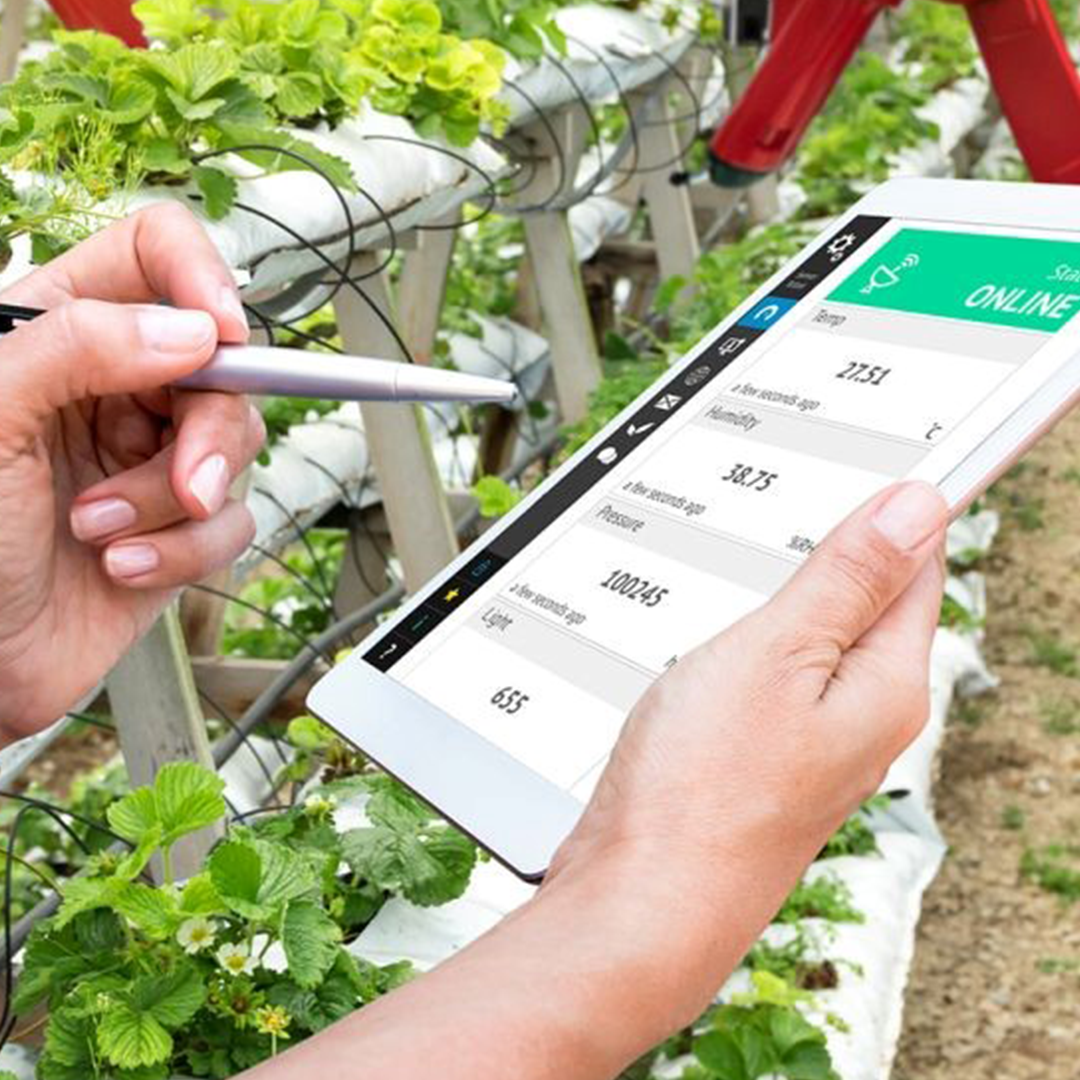Description
Overview of Yield Estimation Using LoRaWan
Yield estimation systems using LoRaWAN are designed to provide accurate predictions of agricultural output by leveraging low-power, wide-area network technology. These systems involve deploying sensors across large farmlands to monitor variables like soil moisture, temperature, and crop health. LoRaWAN’s long-range communication capability allows these sensors to transmit data over several miles, even in remote areas, without needing frequent battery replacements. By collecting real-time data, Yield Estimation systems can apply machine learning models to predict crop yields with higher accuracy. The low cost and scalability of LoRaWAN make it ideal for large-scale agricultural operations, enabling farmers to optimize resource allocation and improve decision-making processes, ultimately enhancing productivity and profitability.
Applications in Yield Estimation Using LoRaWan
- Soil moisture monitoring for Yield Estimation
- Crop health tracking in Yield Estimation
- Remote weather station data collection for yield forecasting
- Leaf wetness monitoring for accurate Yield Estimation
- Pest detection and management in Yield Estimation
- Nutrient level monitoring for predicting crop yield
- Irrigation system automation to optimize Yield Estimation
- Disease outbreak prediction for yield protection
- Greenhouse climate control for enhanced Yield Estimation
- Harvest timing prediction using yield estimation models
- Fertilizer application monitoring to improve yield predictions
- Real-time monitoring of plant growth stages for Yield Estimation
- Water usage tracking to enhance yield forecasts
- Microclimate analysis for localized Yield Estimation
- Crop stress detection for better Yield Estimation
- Multi-sensor integration for comprehensive Yield Estimation
- Canopy temperature measurement in Yield Estimation
- Pollination tracking for yield forecasting
- Predictive maintenance of farming equipment to support Yield Estimation
- Environmental impact assessment on crop yield
- Early frost detection for yield preservation
- Field boundary monitoring in yield analysis
- Automated data logging for continuous Yield Estimation
- Yield Estimation in precision agriculture
- Remote sensing data integration for improved Yield Estimation
- Soil pH monitoring for accurate Yield Estimation
- Crop variety performance tracking for yield forecasting
- Integration of satellite data in Yield Estimation
- Livestock impact assessment on Yield Estimation
- Crop rotation analysis for long-term Yield Estimation
Technical Specifications of GAO Tek Yield Estimation Using LoRaWan
LoRaWan end devices in Yield Estimation Systems
In modern Yield Estimation systems, LoRaWAN end devices are deployed across agricultural fields to gather crucial data for accurate yield predictions. Soil sensors, embedded at varying depths, continuously monitor moisture, temperature, and nutrient levels, offering a detailed understanding of soil health. This information is essential for predicting crop yield and ensuring optimal growing conditions. To further enhance yield accuracy, devices attached to plant canopies measure leaf wetness, canopy temperature, and chlorophyll content. These metrics provide insights into plant health, enabling farmers to detect potential issues early. Additionally, weather stations equipped with LoRaWAN track microclimate conditions, such as temperature, humidity, and wind speed, offering real-time data crucial for predicting how weather variations will impact crop growth.
LoRaWAN sensors are also integrated into irrigation systems, monitoring water usage to ensure efficient resource management. By correlating soil moisture data with irrigation schedules, farmers can optimize water use, reducing waste and improving crop yield. In areas susceptible to pests or diseases, strategically placed sensors enable early detection, allowing for timely interventions that protect crops and maintain high yield potential. This comprehensive data collection through LoRaWAN ensures that all critical factors affecting crop yield are monitored continuously. By leveraging this data, farmers can make informed decisions, leading to improved resource management, reduced risks, and more accurate yield forecasts. This approach represents a significant advancement in precision agriculture, supporting sustainable farming practices and maximizing crop productivity.
LoRaWan Gateways in Yield Estimation Systems
In Yield Estimation systems, LoRaWAN gateways play a crucial role by acting as intermediaries between the sensors distributed across agricultural fields and the cloud-based platforms where data is processed. These gateways are strategically installed to ensure robust and reliable data transmission, covering vast areas while maintaining energy efficiency. Typically, LoRaWAN gateways are mounted on high structures such as towers, poles, or rooftops to maximize their line of sight and minimize obstructions. The elevated positioning allows the gateways to cover extensive ranges, often spanning several kilometers, depending on the terrain and environmental conditions. In flat, open fields, a single gateway can effectively manage the data from numerous sensors spread across large areas, making it ideal for expansive agricultural operations.
The installation process involves careful site surveys to determine the optimal locations for gateways, ensuring minimal signal interference and maximum coverage. Factors such as the layout of the land, the density of vegetation, and the presence of natural or man-made obstacles are considered to enhance signal strength and reliability. In more complex environments, multiple gateways may be deployed in a mesh network configuration, ensuring that all sensors, including those in remote or obstructed areas, maintain consistent connectivity. By strategically placing LoRaWAN gateways, Yield Estimation systems can ensure continuous and accurate data flow from field sensors to the cloud. This reliable data transmission is essential for real-time monitoring, precise irrigation control, and timely interventions, ultimately leading to improved yield predictions and optimized agricultural practices.
Cloud Systems
GAO LoRaWan Cloud Systems consist of the following parts:
GAO LoRaWan gateways and end devices
- LORAWAN
- LoRaWAN Gateways
- LoRaWAN End Devices
- LoRaWAN Accessories
- LoRaWan – Cloud, Server, PC & Mobile Systems
- LoRaWAN Resources
- LoRaWAN Systems
GAO LoRaWan Cloud Services Engine
Cloud Infrastructure, LoRaWan Middleware, Data Analytics and Business Intelligence, and Security Measures.
Integration APIs
APIs enable seamless integration between the LoraWan solution and existing yield estimation systems such as POS, inventory management, and e-commerce platforms, allowing for data exchange and synchronization.
Server, PC & Mobile Systems
GAO Server, PC & Mobile LoRaWan Systems are composed of
LoRaWAN Gateways, and LoRaWAN End Devices
GAO Server, PC & Mobile Software Engine LoRaWan
Servers, PCs, Mobile Computing Devices and Infrastructure, Middleware Software, and Database Management System.
Integration with Yield Estimation Systems
The server, PC, and mobile solution integrates with existing yield estimation systems such as inventory management, asset management, point-of-sale (POS), and enterprise resource planning (ERP) systems. Integration is achieved through APIs, database connections, or middleware adapters, enabling seamless data exchange and synchronization.



